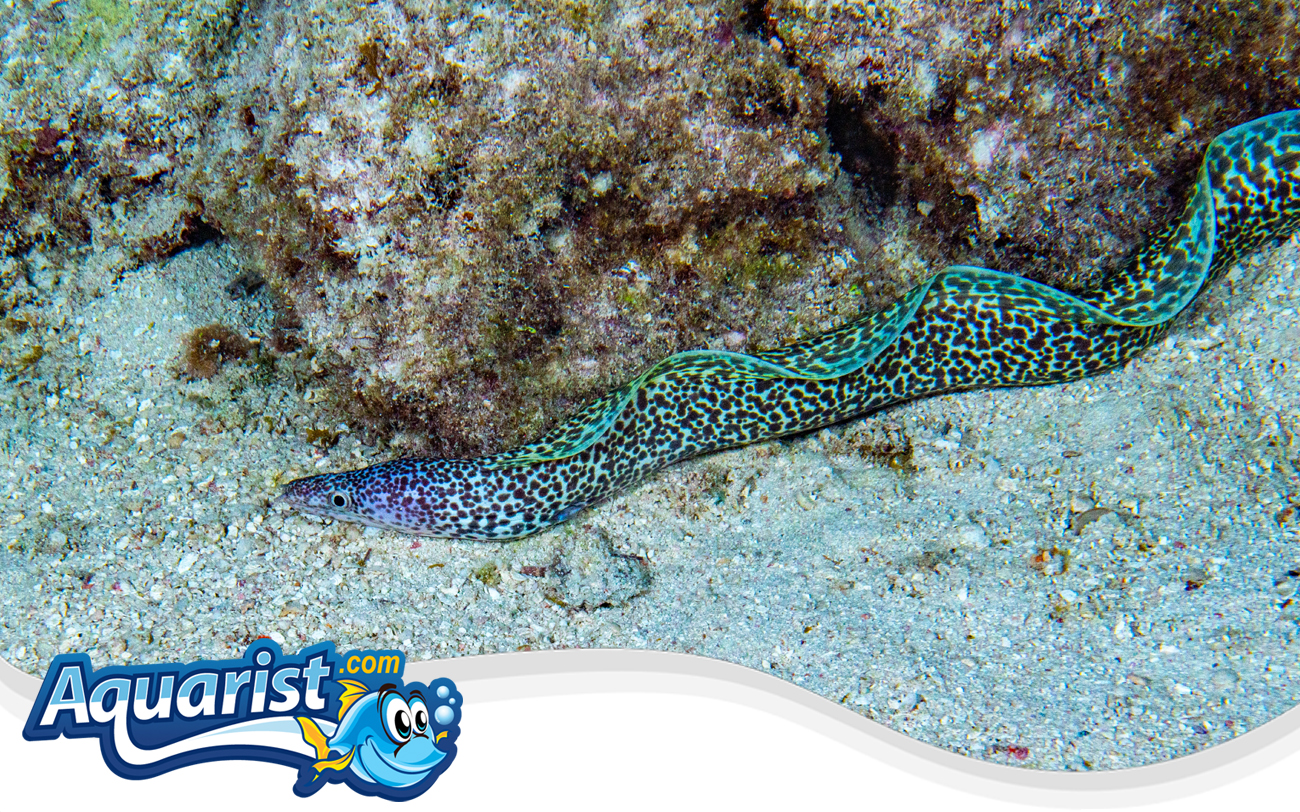Overview
- Native to the Western Atlantic, ranging from the southeastern United States to Brazil, including the Caribbean.
- Easily identified by its elongated, snake-like body covered in dark brown and white spots.
- A nocturnal predator, known for ambushing prey from rocky crevices.
- Highly adaptable and resilient, capable of thriving in a variety of marine environments.
- Can grow up to 6 feet (1.8 meters) in length, making it one of the larger moray eel species.
Feeding
- Carnivorous diet, primarily consuming fish, crustaceans, and cephalopods.
- Prefers live prey but can be trained to accept frozen squid, shrimp, and silversides.
- Best fed 2-3 times per week due to its slow metabolism.
- Feeding tongs should be used to prevent accidental bites, as moray eels have poor vision.
- Requires a varied diet to maintain health and avoid nutritional deficiencies.
Habitat
- Commonly found in rocky reefs, coral formations, and seagrass beds.
- Prefers environments with ample hiding spots such as caves and crevices.
- Best kept in a large aquarium with strong filtration and stable water parameters.
- Requires a secure lid, as moray eels are notorious escape artists.
- A minimum tank size of 150 gallons is recommended due to its size and activity level.
Fish Care
- Optimal water temperature: 74-80°F (23-27°C).
- Ideal pH range: 8.1-8.4, with a specific gravity of 1.023-1.026.
- Resilient to minor fluctuations but requires high-quality water conditions.
- Should be handled with care, as it has a powerful bite and strong defensive instincts.
- Regular tank maintenance and strong biological filtration help prevent ammonia spikes.
Compatibility
- Best suited for predator-specific or semi-aggressive community tanks.
- Compatible with large, robust tank mates such as groupers, lionfish, and triggers.
- Should not be housed with small fish or crustaceans, as they may be seen as food.
- Can be territorial, so multiple eels should only be kept in very large aquariums.
- Generally ignores corals and invertebrates, making it reef-safe with caution.
Aquarium Behavior
- Spends most of its time hiding in rockwork, with its head exposed.
- Becomes more active at night, searching for food.
- Known for its impressive yawning display, which helps regulate respiration.
- May form bonds with aquarists who regularly feed it.
- Thrives in an environment with plenty of shelter and minimal tank aggression.


